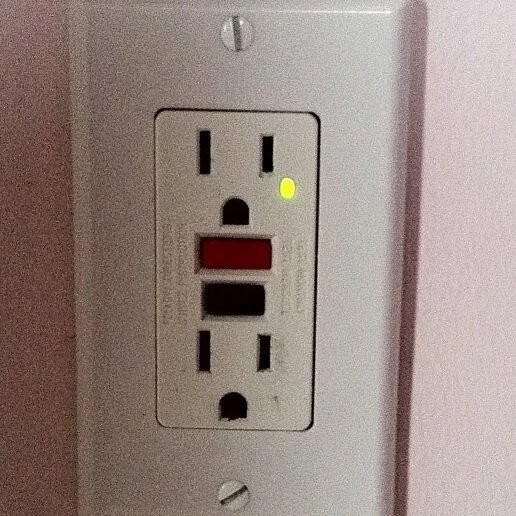The Amazing GFCI
Understanding how GFCI technology works—and why it’s essential in modern homes—helps homeowners appreciate its role in protecting families and property.
The humble GFCI has saved more lives than most people realize. A century after Thomas Edison illuminated the world with the lightbulb, electrical systems had advanced rapidly—but safety lagged behind. Electric shock injuries were far too common, especially in damp or outdoor areas. That changed with the introduction of the Ground Fault Circuit Interrupter, or GFCI. This small yet powerful device revolutionized home electrical safety, preventing countless accidents and saving hundreds of lives every year.
Understanding how GFCI technology works—and why it’s essential in modern homes—helps homeowners appreciate its role in protecting families and property.
How They Work
A GFCI, or ground fault circuit interrupter, is designed to detect when electrical current takes an unintended path, such as through water or a human body. When a ground fault occurs, the GFCI instantly interrupts power, preventing electric shock. It reacts so quickly—typically within 1/40th of a second—that it stops current before serious harm can occur.
The device constantly monitors the flow of current between the hot and neutral wires. Under normal conditions, the current is balanced. If even a slight difference is detected—usually between four and six milliamps—the GFCI shuts off power. This imbalance suggests electricity is escaping somewhere it shouldn’t be, often through a person, moisture, or a grounded surface.
In simple terms, a GFCI acts as a vigilant guardian. It doesn’t wait for a fuse to blow or a circuit breaker to trip—it acts immediately to prevent danger.
A Brief History of GFCI Protection
The National Electrical Code (NEC) first required GFCI protection in 1968 for underwater pool lighting, recognizing the apparent risk of mixing electricity and water. By 1971, GFCIs were required for outdoor outlets and receptacles near pools. A few years later, they were added to bathroom receptacles and construction sites.
By the mid-1970s, garage outlets, basements, crawl spaces, and other damp locations joined the list. Eventually, GFCIs became standard in kitchens, laundry areas, and anywhere electrical equipment might contact moisture.
Each update to the NEC expanded the reach of GFCI protection, dramatically reducing electrocutions and electrical fires nationwide. What began as a niche safety feature is now one of the most important components of any electrical system.
Where GFCIs Are Required Today
Modern electrical codes require GFCIs in nearly every area of a home where moisture is present or electrical tools are frequently used. These include:
• Bathrooms
• Kitchens
• Laundry rooms
• Basements and garages
• Outdoor receptacles and outlets near pools or spas
• Utility sinks and unfinished areas
Even commercial and industrial spaces now rely heavily on GFCI protection. From hotel bathrooms to warehouse wash stations, these devices guarantee safety wherever water and electricity coexist.
How a GFCI Outlet Functions
A GFCI outlet looks like a standard receptacle but has two small buttons on the front—“Test” and “Reset.” Inside, it contains a miniature transformer and an electronic sensor that continuously compares the current between the hot and neutral conductors.
When an appliance or device is plugged in, electricity flows from the hot wire through the appliance and back through the neutral wire. If any current leaks out of this circuit—say, through a person touching a wet surface—the GFCI detects the imbalance and immediately cuts power.
This quick response protects people from dangerous shocks and prevents minor faults from escalating into larger hazards, such as electrical fires.
Professional electricians install GFCI outlets in areas that meet code requirements or where safety is a priority. These devices are now available in both outlet and breaker form, offering flexibility for homes and businesses alike.
Periodic Testing
Even the most reliable safety device requires maintenance, and GFCIs are no exception. Over time, wear, moisture, or power surges can affect their sensitivity. Periodic testing secures continued protection.
Older GFCI outlets include a manual test button. Pressing it should immediately trip the outlet, cutting off power to anything plugged in. Pressing “Reset” restores power. If pressing the test button doesn’t interrupt power, the device has failed and should be replaced immediately.
In 2015, Underwriters Laboratories (U.L.) began requiring manufacturers to produce self-testing GFCI outlets. These units automatically check their own functionality, tripping or displaying an indicator light if they detect a failure. This innovation has simplified maintenance, offering homeowners a constant layer of assurance without the need for monthly manual testing.
While self-testing outlets are now standard, older manual models are still safe and effective when properly maintained. Regular testing—ideally once a month—is all that’s needed to confirm continued protection.
Why GFCIs Are Essential For Modern Homes
Electricity is an essential part of daily life, but it’s also one of the most dangerous forces in a home. Water, moisture, and damaged cords can turn a normal outlet into a serious hazard. GFCIs prevent this by instantly stopping the flow of current at the first sign of trouble.
They’re particularly vital in coastal or humid environments where moisture levels are consistently high. In states like Florida, where electrical systems often face both humidity and frequent storms, professional GFCI installation and inspection are crucial for maintaining home safety.
The benefits of GFCI protection include:
• Preventing electric shock in bathrooms, kitchens, and outdoor spaces.
• Reducing the risk of electrical fires created by ground faults.
• Protecting sensitive appliances and electronics from power irregularities.
• Verifying compliance with the latest electrical safety codes.
• Enhancing overall electrical reliability and system performance.
GFCIs are a small investment with a massive return—comfort, safety, and compliance with modern standards.
When To Replace GFCI Outlets
Even though GFCI outlets are durable, they aren’t designed to last forever. The average lifespan is about ten years, though this can vary depending on usage, moisture exposure, and power surges.
It’s time to replace a GFCI if you notice any of the following:
• The test and reset buttons stop working.
• The outlet fails to trip when tested.
• The outlet feels warm to the touch.
• You hear buzzing, crackling, or popping sounds.
• The indicator light (on self-testing models) shows a fault.
Replacing outdated or malfunctioning GFCIs is not just good maintenance—it’s a vital safety measure. Professional electricians can evaluate your system and install new devices that meet current NEC standards, including the latest self-testing technology.
Why Professional Installation Matters
Installing or replacing GFCIs may seem simple, but professional expertise verifies the job is done safely and correctly. A licensed electrician can assess your home’s electrical layout, determine which outlets need GFCI protection, and install them in compliance with local codes.
Professional electricians also check the grounding system, ensuring that outlets provide complete protection. Improperly wired or ungrounded outlets can compromise GFCI performance.
Hiring a professional makes sure that every GFCI device—whether outlet-based or panel-mounted—works as intended, providing full protection without interference or nuisance tripping.
Key Takeaways
• GFCIs detect ground faults and shut off power almost instantly to prevent electric shock and injury.
• These outlets are required in bathrooms, kitchens, outdoor areas, and anywhere electricity and moisture might meet.
• Self-testing GFCI outlets provide consistent protection and alert you if something goes wrong.
• Older GFCI outlets should be tested periodically to confirm they’re still responding properly.
• Professional installation guarantees your outlets meet code, function safely, and last for years without issues.
FAQs
How often should GFCI outlets be tested?
They should be tested monthly and inspected annually by an electrician. Self-testing models continuously monitor themselves.
Can GFCI outlets wear out over time?
Yes. Most last between seven and ten years, depending on use and environment.
Are GFCI outlets required everywhere in the home?
Not everywhere, but they’re mandatory in wet or high-risk areas according to the National Electrical Code.
What’s the difference between a GFCI outlet and a circuit breaker?
A circuit breaker protects against overloads and short circuits, while a GFCI protects against electric shock caused by ground faults.
Can a GFCI be installed on any outlet?
In most cases, yes. However, the wiring must be properly grounded and meet local code requirements.
Why is professional installation recommended?
Electricians secure correct wiring, grounding, and load connections—critical factors for GFCI reliability and safety.
What should I do if my GFCI keeps tripping?
It might indicate a fault in the circuit or appliance. Contact a licensed electrician for troubleshooting.
Do GFCIs protect against lightning strikes?
They protect from ground faults but not direct lightning strikes. Whole-home surge protection is recommended for complete defense.
Are GFCI outlets safe for outdoor use?
Yes, as long as they’re rated for outdoor installation and covered with weatherproof housing.
How can I tell if my home’s GFCIs are up to code?
A professional electrical inspection can confirm compliance with the latest NEC requirements and identify outdated or missing protection.
Trust Kennedy Electric for expert hot tub electrical, exhaust fan installation, ceiling fan installation, whole-house electrical surge protection, GFCI outlet installation, and other residential electrical services in Citrus, Hernando, and Pasco Counties. Book a service by calling us at 352-799-3434.


